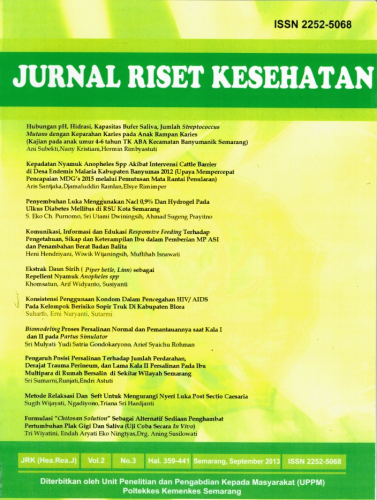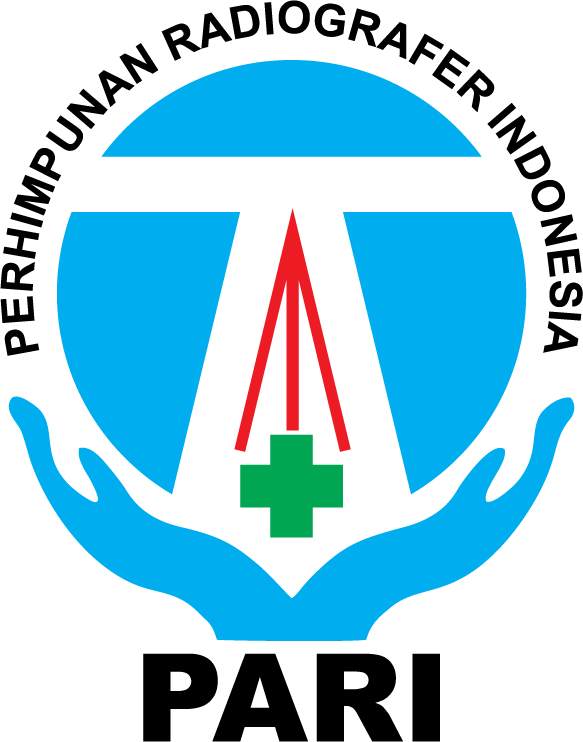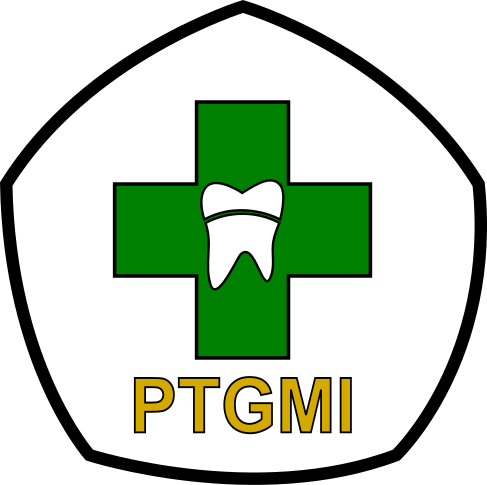ANALYSIS OF RISK FACTORS OF SEXUAL TRANSMITTED INFECTIONS
Abstract
Sexually transmitted infections (STIs) are a very dangerous problem, especially with the transmission of STIs. The incidence of STIs is still high because people's knowledge of STIs is still low, and people are still ashamed to admit to STI sufferers so that STI cases are still high. The purpose of this study was to determine the analysis of risk factors of sexually transmitted infections in North Sumatera province (secondary data analysis for the 2017 IDHS). This study conducted a secondary data analysis of the 2017 IDHS in North Sumatra Province. This research was conducted on 1717 women of childbearing age in North Sumatra Province. This study used the Chi-square test and Prevalent Rate (PR). The results of this study show chi-square analysis results showed a relationship between the source for STI knowledge: health professional (p <0.001), knowledge of the source for STI knowledge: a religious institution (p <0.001), male STI symptoms (p <0.001) with sexual transmitted infections symptoms with a p-value <0.001. A woman of childbearing age who has a partner with STI symptoms has a 26.088 times greater risk of suffering from an STI than a woman of childbearing age whose partner does not have STI symptoms. Sexually transmitted infections (STIs) are related to STI knowledge: health professional, knowledge of the source for STI knowledge: a religious institution, male STI symptoms. Symptoms of STIs in women of childbearing age partners are closely related to the incidence of STIs in women of childbearing age.
Keywords
Full Text:
PDFReferences
Alhassan, R. K. (2019). Determinants of Use of Mobile Phones for Sexually Transmitted Infections (STIs) Education and Prevention Among Adolescents and Young Adult Population in Ghana: Implications of Public Health Policy and Interventions Design. Reproductive Health, 16(120), 1–11. https://doi.org/https://doi.org/10.1186/s12978-019-0763-0
Askhori, S. (2021). Socio-Economic Analysis and Incidence of Sexually Transmitted Infections in North Sumatra Province. Contagion: Scientific Periodical Journal of Public Health and Coastal Health, 3(1), 29–41. https://doi.org/http://dx.doi.org/10.30829/contagion.v3i1.9268
Barbara. (2019). Does Schooling Protect Sexual Health? The Association between Three Measures of Education and STIs Among Adolescents in Malawi. Population Studies, 74(2), 241–261. https://doi.org/https://doi.org/10.1080/00324728.2019.1656282
Baruah. (2016). Awareness about Sexually Transmitted Diseases among Adolescents in Urban Slums of Jorhat District. Int J Med Sci Public Health, 5(1), 2373–2370.
Betan, A. (2020). Analisis Angka Kejadian Penyakit Infeksi Menular Seksual. Jurnal Ilmiah Kesehatan Sandi Husada, 9(2), 824–830.
Budiati, R. E. (2017). Risiko Infeksi Menular Seksual Pada Anak Buah Kapal Di Pelabuhan Juwana Pati. Jurnal Kesehatan Masyarakat, 5(1), 1–11.
Carmelita, D. (2017). Analisis Faktor-Faktor yang Berhubungan Dengan Praktik Skrining IMS Oleh Lelaki Seks Lelaki (LSL) Sebagai Upaya Pencegahan Penularan HIV (Studi Kasus Pada Semarang Gaya Community). Jurnal Kesehatan Masyarakat, 5(3), 486–495.
Dinas Kesehatan Sumatera Utara. (2018). Profil Kesehatan Provinsi Sumatera Utara 2018, Prevalensi Kejadian HIV-AIDS di Sumatera Utara 2017. Sumatera Utara.
Diniarti, F. (2019). Hubungan Pengetahuan Dengan Kejadian Infeksi Menular Seksual Di Puskesmas Penurunan Kota Bengkulu Tahun 2018. Journal of Nursing and Public Health (JNPH ), 7(1), 52–58.
Gabarron. (2016). Use of Social Media for Sexual Health Promotion: a Scoping Review. Glob Health Action, 9(1), 321–330.
Gupta, N. (2020). Determinants of STI’s and Contraceptive Awareness Among Indian Adolescents: a Hospital Based Study. The New Indian Journal of OBGYN, 8(1), 130–134. https://doi.org/10.21276/obgyn.2021.8.1.25
Irwan. (2018). Risk Factors for Sexually Transmitted Disease and HIV/AIDS Towards Males Sex Males in Gorontalo City. International Journal of Innovative Science and Research Technology, 3(9), 106–109.
Ismiati. (2018). Hubungan Penggunaan Kondom Dan Status Perkawinan Dengan Kejadian Infeksi Menular Seksual Pada Wanita Usia Produktif. Jurnal Ilmiah Bidan, 3(2), 17–20.
Kementerian Kesehatan RI. (2015). Profil Kesehatan Indonesia tahun 2014. Jakarta: Kementerian Kesehatan RI. Retrieved from Profil Kesehatan Indonesia 2014.
Kementerian Kesehatan RI. (2017). Ditjen P2PL. Retrieved from Laporan Perkembangan HIV/AIDS/AIDS Triwulan IV tahun 2016.
Kora FT. (2016). Pengetahuan tentang Infeksi Menular Seksual dengan Perilaku Seksual Tidak Aman pada Remaja Putri Maluku Tenggara Barat di Daerah Istimewa Yogyakarta. Jurnal Kesehatan Reproduksi, 3(1), 50–59.
Kurniati, D. (2018). Hubungan Pengetahuan, Pendidikan Dan Akses Ke Pelayanan Kesehatan Dengan Upaya Pencarian Pertolongan Infeksi Menular Seksual (IMS) Pada Wanita Pekerja Seksual (WPS) Di Desa Pasirsari Kabupaten Bekasi. Jurnal Ilmiah Kesehatan (JIK), XI(1), 321–330.
Kusnsan. (2016). Analisis Hubungan Determinan Kejadian Penyakit Infeksi Menular Seksual (IMS) pada Wanita Penjaja Seksual (WPS). Jurnal Kesehatan, 4(2), 1–10.
Mamonto S. (2014). Pengaruh Pendidikan Kesehatan Terhadap Tingkat Pengetahuan Dan Sikap Remaja Tentang Penyakit Menular Seksual di SMK Fajar Bolaang Mongondow Timur. J Keperawatan Univ Samratulangi, 2(2), 51–56.
Mularsih, S. (2020). Gambaran Pengetahuan Dan Sikap Remaja Tentang Infeksi Menular Seksual (IMS) Di Desa Muntal Pakintelan Kota Semarang. Maternal, 4(2), 89–93.
Naidoo, A. (2018). Adolescent sexuality, STI’s and HPV. Obstetrics and Gynaecology Forum, 28(2), 1–10. https://doi.org/https://hdl.handle.net/10520/EJC-fadd869c2
Nari, J. (2015). Analisis Faktor-Faktor yang Berhubungan dengan Kejadian IMS pada Remaja di Klinik IMS Puskesmas Rijali dan Passo Kota Ambon. Jurnal Promosi Kesehatan Indonesia, 10(2), 131–143.
Nirmalasari, N. P. C. (2018). Prevalensi dan Karakteristik Infeksi Menular Seksual di Klinik Anggrek UPT Ubud II Pada Bulan Januari - Desember 2016. Medika Udayana, 7(4), 169 – 175.
Noviyani. (2017). Perilaku Seksual Berisiko Infeksi Menular Seksual (Ims) Pada Kelompok Lesbi Di Kota Semarang. Journal of Health Education, 2(2), 122–129.
Nurdin, E. (2017). Identifikasi Neisseria Gonorrhoeae Pada Penderita Dengan Gejala Klinis Infeksi Penyakit Menular Seksual Di Puskesmas Siko Kota Ternate Tahun 2016. Jurnal Riset Kesehatan, 6(1), 50 – 53.
Nursyamsi. (2017). Tingkat Pengetahuan Mahasiswa Tentang HIV/AIDS di Akademi Kebidanan Sandi Karsa Makassar. Jurnal Ilmiah Kesehatan Sandi Husada, 5(2), 1–12.
Pandjaitan, M. C. (2017). Gambaran Pengetahuan dan Sikap terhadap Infeksi Menular Seksual pada Remaja di SMA Frater Don Bosco Manado. Jurnal E-Clinic (ECl), 6(2), 148–155.
Pangaribuan, S. M. (2017). Gambaran Tingkat Pengetahuan Wanita Pekerja Seks Komersial Tentang Infeksi Menular Seksual. Jurnal Pendidikan Keperawatan Indonesia, 3(2), 175–181.
Puspita, L. (2017). Analisis Faktor yang Berhubungan dengan Kejadian Infeksi Menular Seksual Pada Wanita Pekerja Seksual. Jurnal Aisyah: Jurnal Ilmu Kesehatan, 1(2), 31–44.
Saenong, R. H. (2020). Hubungan Tingkat Pengetahuan dengan Sikap Terhadap Infeksi Menular Seksual pada Mahasiswa Pendidikan Dokter. Muhammadiyah Journal of Midwifery, 1(2), 51–56. https://doi.org/10.24853/myjm.1.2.
Sallipadang. (2019). Gambaran Pengetahuan dan Sikap Mahasiswa Tingkat 1 Tentang Kesehatan Reproduksi di Akademi Kebidanan Sinar Kasih Toraja Tahun 2018. Indonesia J Health Promotion, 2(2), 105–109.
Siregar IA. (2019). Hubungan Pengetahuan Dan Sikap Dengan Tindakan Pencegahan Penyakit Menular Seksual Pada Anak Buah Kapal Di Pelabuhan Belawan 2019. . . J Kebidanan Kestra, 2(1), 1–8.
Sridana, M. E. (2015). Karakteristik Pasien Infeksi Menular Seksual (IMS) Pada Puskesmas Ii Denpasar Selatan Periode Januari – Juni Tahun 2012. Jurnal Medika Udayana, 3(12), 1–9.
Tuntun, M. (2018). Faktor Resiko Penyakit Infeksi Menular Seksual (IMS). Jurnal Kesehatan, 9(3), 419–426.
Wenas, H. A. (2021). Perilaku Wanita Pekerja Seksual (WPS) Terkait Pencegahan Infeksi Menular Seksual (IMS) Di Pelabuhan Kota Manado. Jurnal KESMAS, 10(4), 72–78.
WHO. (2016). Reproductive Health. Retrieved from WHO website: www.who.int/mediacentre/factsheets/fs110/en/
DOI: https://doi.org/10.31983/jrk.v10i2.6866
Article Metrics
Refbacks
- There are currently no refbacks.
Copyright (c) 2021 Jurnal Riset Kesehatan




















































